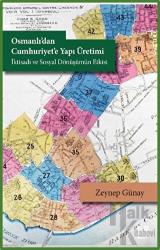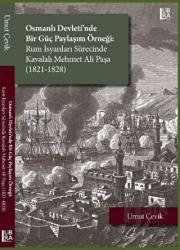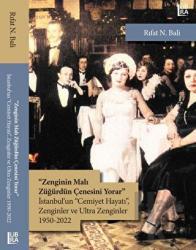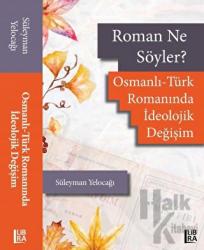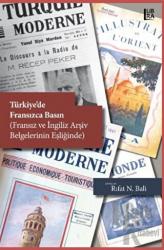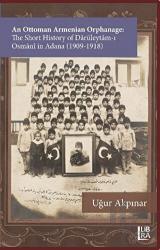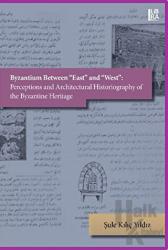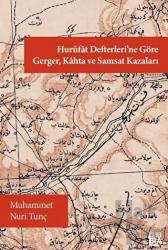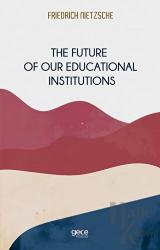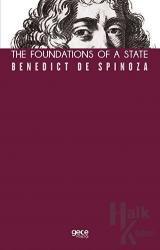An Ornamental Journal For Ottoman Turkish Women: Süs (16 June 1923 - 26 July 1924) (Ciltli)
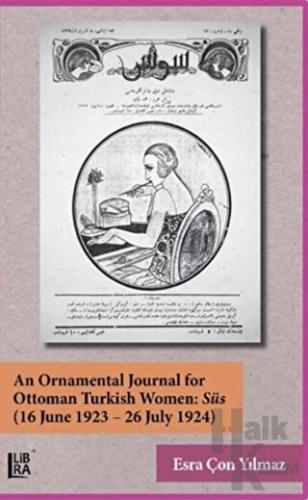
The publication of women-oriented class journals, which was initiated within the last period of the Ottoman Empire and accelerated during the Second Constitutional Period, was pursued in the first years of the Turkish Republic as well. Women’s journals published within this period can be reckoned as the descendants of those published in the Ottoman Period. Süs is a women’s journal published precisely during this process of transition (1923-1924). The diversity of the content from literary works to entertaining parts, practical guides, political news and also intellectual articles, and the object to keep an equal distance between all of these different elements, brings forth the idea that Süs was published in accordance with commercial motives rather than an intellectual mission. Furthermore, the actual target mass of the journal is observed to be the educated young girls.
Considering the fact that, the majority of the editorial staff was experienced literary people and the people who were previously engaged in publication of various magazines, Süs can be evaluated respectively successful in terms of anticipating the overall tendency of the target mass and preparing a relevant content that appeals to them. One of the most significant objectives of this work is to obtain an opinion about the agenda, interests and intellectual worlds of the target mass of Süs, which was skillfully issued with commercial motives, namely the educated young girls who used to live in İstanbul or other big cities between 1923 and 1924. Moreover, it is aimed to discuss the remarkable “women’s issues” of the related period through the perspective of an Ottoman women’s journal.
- Açıklama
The publication of women-oriented class journals, which was initiated within the last period of the Ottoman Empire and accelerated during the Second Constitutional Period, was pursued in the first years of the Turkish Republic as well. Women’s journals published within this period can be reckoned as the descendants of those published in the Ottoman Period. Süs is a women’s journal published precisely during this process of transition (1923-1924). The diversity of the content from literary works to entertaining parts, practical guides, political news and also intellectual articles, and the object to keep an equal distance between all of these different elements, brings forth the idea that Süs was published in accordance with commercial motives rather than an intellectual mission. Furthermore, the actual target mass of the journal is observed to be the educated young girls.
Considering the fact that, the majority of the editorial staff was experienced literary people and the people who were previously engaged in publication of various magazines, Süs can be evaluated respectively successful in terms of anticipating the overall tendency of the target mass and preparing a relevant content that appeals to them. One of the most significant objectives of this work is to obtain an opinion about the agenda, interests and intellectual worlds of the target mass of Süs, which was skillfully issued with commercial motives, namely the educated young girls who used to live in İstanbul or other big cities between 1923 and 1924. Moreover, it is aimed to discuss the remarkable “women’s issues” of the related period through the perspective of an Ottoman women’s journal.
Format:Kitap
- Taksit Seçenekleri
- Axess KartlarTaksit SayısıTaksit tutarıGenel ToplamTek Çekim525,00525,002273,00546,003185,50556,50694,50567,00964,17577,50Finansbank KartlarıTaksit SayısıTaksit tutarıGenel ToplamTek Çekim525,00525,002273,00546,003185,50556,50694,50567,00964,17577,50Bonus KartlarTaksit SayısıTaksit tutarıGenel ToplamTek Çekim525,00525,002273,00546,003185,50556,50694,50567,00964,17577,50Paraf KartlarTaksit SayısıTaksit tutarıGenel ToplamTek Çekim525,00525,002273,00546,003185,50556,50694,50567,00964,17577,50Maximum KartlarTaksit SayısıTaksit tutarıGenel ToplamTek Çekim525,00525,002273,00546,003185,50556,50694,50567,00964,17577,50World KartlarTaksit SayısıTaksit tutarıGenel ToplamTek Çekim525,00525,002273,00546,003185,50556,50694,50567,00964,17577,50Diğer KartlarTaksit SayısıTaksit tutarıGenel ToplamTek Çekim525,00525,002--3--6--9--
- Yorumlar
- Yorum yazBu kitabı henüz kimse eleştirmemiş.
- Yayınevinin Diğer Kitapları



